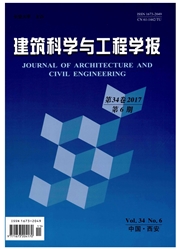

 中文摘要:
中文摘要:
为进一步推动预应力节段预制拼装桥墩在高烈度区桥梁工程中的应用,从自复位能力、耗能能力、底节段容许损伤能力和基于性能的抗震设计方法4个方面系统梳理和总结了各国学者开展的相关研究,并指出了当前研究存在的问题以及未来的发展方向。结果表明:无粘结预应力筋能提供更好的自复位能力,桥墩震后残余变形很小;相对于现浇桥墩,该形式桥墩耗能能力较差,需要设置专门的耗能装置,其中外置耗能装置震后可更换,更值得推广;预应力节段预制拼装桥墩鲁棒性差,必须注意提高底节段容许损伤能力;针对预应力节段预制拼装桥墩的基于性能抗震设计才刚刚起步,需要进一步发展。
 英文摘要:
英文摘要:
In order to promote the application of prestressed segmental precast and assembled piers in high seismicity areas bridge engineering, the relevant researches were summarized systematically from four aspects, including self-centering, energy dissipation, damage tolerance of bottom segment and performance-based seismic design, and the existing problems and future research directions were pointed out. The results show that unbonded prestressed tendons can provide better self-centering, and the residual deformation of pier is very small after the earthquake. Compared with the cast-in-place pier, the prestressed segmental precast and assembled pier is poor in energy dissipation capacity and need to set up a special energy dissipation device, in which the external energy dissipation device can be replaced after the earthquake and is worth popularizing. The robust performance of prestressed segmental precast and assembled piers is poor, which should be paid attention to improve the allowable damage ability of the bottom section. The performance-based seismic design of prestressed segmental precast and assembled piers has just started and needs further development.
 同期刊论文项目
同期刊论文项目
 同项目期刊论文
同项目期刊论文
 期刊信息
期刊信息
